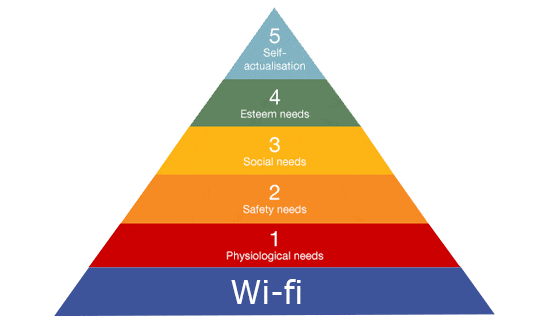Power to the people
- 10 December 2013

If you asked people whether they wanted universal wi-fi access across the NHS or to be able to fill out the Friends and Family Test I guess we all know what the answer would be.
Now, I am not being churlish about the FFT. It is a great achievement and hitting the millionth result, as happened last week, goes a good way to converting the NHS from being feedback poor to feedback rich. It may well transform care. But the FFT does tell us some interesting things about the NHS’s priorities around feedback.
The hard hat approach
At its core feedback is an engineering term – a change in output is fed back into the system to moderate that output. There is a one-to-one connection between a data item and some service output: you comment that the ward is too noisy and someone on the ward takes action to make it quieter.
Pooling feedback data is also useful at the macro-level. Boards need to see the big picture, so they want dashboards and trend analysis so they know which set of patient comments constitute this week’s smoke alarm going off.
Meanwhile, for politicians the primary purpose of feedback is to help people choose; to nail scores to the doors. The real reason for collecting that big pile of FFT data is so that patients can at last see that service X is better than service Y and choose accordingly. The hidden hand of the market will then do the rest.
As a result of all this, NHS England’s view of feedback is shaped around two core assumptions:
– Feedback is engineering. Industrialise inputs via things like FFT, link all these inputs to patient advice and liaison services or some other bit of the machine, shovel everything into fancy software that will save you the trouble of actually reading the stories – and you will have a self-driving improvement mechanism that will make Francis, Keogh and Berwick redundant.
– Size matters. The bigger the pile of data the better. If a thousand bits of feedback are good then a million is better. The more comments that gush out of the FFT fire hydrant, the more likely it is that some will reach the most benighted of wards, and the more the statistical accuracy of the analytic software will improve.
The problem with this view is not that it is wrong – clearly feedback at scale is helpful. The problem is that putting a big pile of patient comments at the centre of care is not the same as putting patients themselves at the centre of care.
Telling stories, holding conversations
About a year ago, it became clear that the FFT was going to radically change the context in which Patient Opinion operated. So we began to think more deeply about what distinguished a Patient Opinion interaction from, say, an FFT comment. In an age of industrialised feedback how could we really add value?
To understand feedback in the 21st century you have to move beyond the mechanistic ‘feedback’ embodied in the FFT and see the human reality that lies beyond each data point. When people are typing their stories into Patient Opinion they don’t want to be ‘feedback’, they want to be heard. By a human. Preferably one that works in the team that looked after them.
Sharing their stories online is becoming a way of defining themselves, of understanding what has befallen them in relation to the disease, distress and death that form the core business of the NHS.
We have always made sense of these fell events by telling and re-telling these stories. In the age of democratised voice, we now do that in ways that are public. And since a key audience in this sense-making process is the staff who created the care I experienced, I want them, above anyone else, to listen and to respond.
Of course, it is much easier for everyone in the busy, busy, busy NHS to see the data, not the joy, to look at score on the door, not hear the pain.
This approach will not be enough because the outside world has changed. Twenty years ago no one had a public voice; now everyone has one and they are asking the NHS, over and over, to ‘care’.
You can see this as an irritating distraction or as fodder for the snazzy software apps that will tell us what ‘they’ think. Or you can see it as a gift, an opening, an integral part of how clinical care is going to be practised in the 21st century.
Building communities
For Patient Opinion, feedback is morphing from data into conversations. A patient shares the story of their care on the site and a member of staff responds. Curating this exchange, making it as safe and productive as we can, is the essence of what we do.
But this is just the first stage. Surrounding this core conversation are two communities: on one side the patient is embraced by a community of solidarity – all those people who care about them, who phone up, who bring in the flowers or look after the kids during the chemo sessions.
On the other is the professional’s own community of practice – not just those people involved in the specific care pathway but also senior management, commissioners, Healthwatch, whoever.
Our job at Patient Opinion is to use all these new ‘social’ tools to help the community of solidarity and the community of professional practice become visible to each other. When you do this, conversations begin to move beyond ‘the ward was too noisy’ to things like this extraordinary expression of empathy from a patient to their clinician:
“Tragically an incredibly brave fellow bowel transplant patient had passed away a few days earlier. It hits all of us bowel transplant patients very hard when one of the family doesn’t make it. We share the successes and collectively feel the pain… This feeling doesn’t just apply to fellow patients. Right in front of my eyes I was seeing the pain and upset felt by the transplant team and my surgeon. Our surgeon.”
How not to do it
This week, the Harvard Business Review published an article by Rob Markey called ‘Five Ways to Learn Nothing from Your Customers’ Feedback’. Here are a couple of the things it suggests we should not be doing:
– Don’t just aggregate the feedback into scores, percentages, and averages
– Don’t eliminate the human voice.
Although the article is a cautionary tale for industrialised feedback systems, I don’t want to diminish the very real potential of the FFT. But we must also recognise that the 20th century, engineering-derived concept of ‘feedback’ fails to do justice to what is happening in our newly social world and its potential to shape health care in new ways.
Maslow’s hierarchy of needs maps what we are all capable of. Adding wi-fi neatly highlights how technology is becoming utterly entwined with the realisation of the human spirit. If we persist in seeing the richness of all this as simply ‘data’ then data is all we will get.


Paul Hodgkin
Paul Hodgkin is chief executive of Patient Opinion, a website on which patients, service users, carers and staff can share their stories of care across the UK. Patient Opinion is a not-for-profit social enterprise based in Sheffield.
Until 2011 Paul also worked as a GP and has published widely including in the BMJ, British Journal of General Practice and the Guardian and the Independent. Follow him on Twitter @paulhodgkin.




